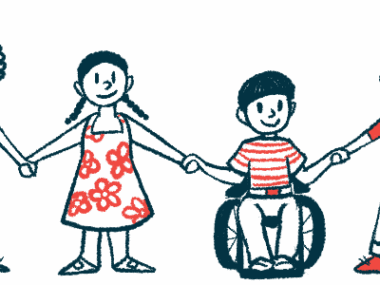Food Insecurity Rose, Mental Health Declined During COVID-19 in US
Written by |

Adults and children with cystic fibrosis (CF) experienced a marked increase in food insecurity — meaning a limited or uncertain availability of foods that are nutritionally adequate and safe — during the COVID-19 pandemic, a U.S. study found.
Patients with food insecurity also reported poorer mental health and self-care during the pandemic, which was marked by at-home confinements and financial hardships, compared with those feeling more secure.
The study, “Food Insecurity and Mental Health During the COVID-19 Pandemic in Cystic Fibrosis Households,” was published in the journal Pediatric Pulmonology.
With poorer nutrient absorption and difficulties in maintaining body weight common to people with CF, feelings of food insecurity are also greater among patients relative to the general population. Such insecurity can also aggravate the depression and anxiety that can also associate with the disease.
The COVID-19 pandemic, with its “unprecedented measures, including shelter-in-place orders, business/school closures, and social distancing,” had a “profound negative impact” on health, and emotional and financial well-being for people worldwide, the researchers wrote.
Its impact on CF patients is less clear. The rate of COVID-19 infection rate is known to be lower in these patients than the general public, but the stresses of living with a chronic disease at a time of added financial, social, and emotional burden can leave them more “vulnerable to experiencing worsening food insecurity and mental health during the pandemic,” they noted.
Researchers at the University of California, San Francisco, conducted an online questionnaire of CF adults and caregivers of children in the U.S., recruited via Facebook and Twitter from May 2020 to February 2021. Questions were in Spanish and English.
To assess food insecurity, a screening tool called “Hunger Vital Sign” from the U.S. Department of Agriculture Household Food Security Survey, was used.
Participants here were asked if two statements were true, sometimes true, or never true in their household: “We worried whether our food would run out before we got money to buy more,” and “The food we bought just didn’t last, and we didn’t have money to get more.”
Responding “often true” or “sometimes true” to either statement was considered to indicate food insecurity.
Of the 372 respondents, 247 were adults with CF and 125 were parents or guardians of a child with the condition. Most patients were female (65.9%), non-Hispanic white (90.3%), and had private insurance (63.4%).
Household food insecurity was seen to significantly increase during the pandemic, from 18.8% (70 respondents before the pandemic) to 21.8% (81 respondents).
Overall, 22 respondents (5.9%) moved from feeling food security to insecurity, and 11 (3.0%) went from food insecurity to security during the pandemic.
Children with CF were reported to have greater food insecurity compared with adult patients, with feelings of such insecurity rising among children from 23.2% to 27.2%. In adults during these years, they increased from 16.6% to 19.0%.
Children, subsequently, were also more likely to move to food insecure compared with adults — 7.2% vs 5.3%.
Participants who felt food insecure during the pandemic were significantly more likely to experience a reduction in their household income (60.5%) compared with those considered food secure (23.4%), and they also were at greater risk of being unemployed (45.7% vs. 16.2%).
This was reflected in their greater difficulties in finding suitable foods due to their financial status or a drop in store supplies compared with food secure participants (82.7% vs. 24.4%). Almost half of those with food insecurity (45.7%) received assistance for food compared with 4.1% of food secure individuals, a statistically significant difference.
Weight loss was greater among the food insecure (32.1%) than the food secure (13.1%) group.
Likewise, adherence to CF medications was poorer among food insecure patients than secure ones (1.7% vs. 12.4%), with a similar difference seen in airway clearance adherence (13.6% vs. 5.8%).
Mental health, evaluated through the Patient Health Questionnaire-4, considerably declined among CF patients throughout these study years, the researchers found, with “an increased proportion of depression (17.5% vs. 13.4%), anxiety (22.0% vs. 17.7%), and abnormal mental health screen (24.2% vs. 19.6%) compared to before the pandemic.”
Again, pandemic declines were greater in patients reporting food insecurity relative to those with security, with differences between these groups evident with depression (37.0% vs. 12.0%), anxiety (50.6% vs. 14.1%), and in an abnormal mental health screen (53.1% vs. 16.2%).
Overall, “the COVID-19 pandemic has disproportionately impacted people with CF and their families with food insecurity compared to those who were food secure,” the researchers wrote.
“The long-term effects of the COVID-19 pandemic in the CF community continue to be unknown, but the findings of significantly increased financial and mental health burdens on patients with CF who have food insecurity are concerning and deserve close follow-up,” they added.







